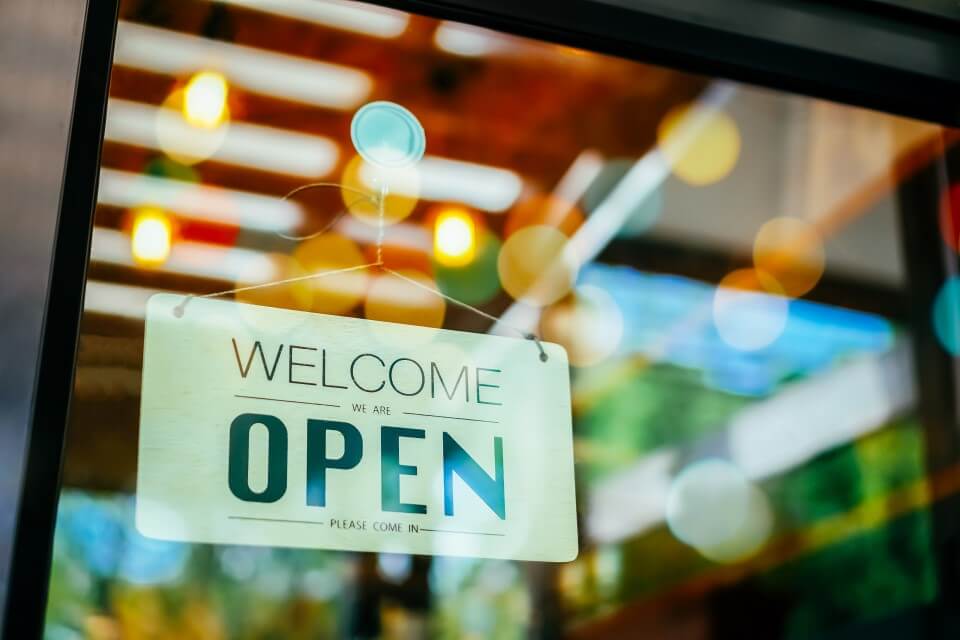If you’re online, you might be familiar with SEO strategies to become more competitive in search engine rankings. But what if you’re local? What if you don’t want to attract people across the world? What if you’re a service business that only wants traction within a few miles of your location? Local SEO can help you gain an audience right in your local community.
If you’re familiar with local SEO, you may have already performed certain tasks to help you rank better for specific search terms. But SEO updates dictate what’s effective … and what’s not.
Are you following the most current rules?
How Buyers Shop in Today’s World
These days, people shop differently. Online shoppers are savvier than ever.
- Google dominates the search engine market with around 92 percent of the market share.
- The number of searches using the phrase “shopping near me” has grown over 200 percent over the past two years.
- Most consumers—nearly 90 percent—purchase within a week of performing a local search.
Whether you’ve used local SEO as a part of your strategy before or not, you can no longer ignore the potential. Local SEO helps you get found by people in your local community. Focusing on your local SEO tactics can optimize your site for local search and make you come up higher each time a prospect goes looking for your niche.
But, if you know anything about SEO, you know the rules are constantly changing. What worked a few years ago won’t necessarily give you the same results today. In some cases, it might even get you banned.
So what’s working today?
User Experience—It Still Matters
If you want better placement in the search engines, you have to factor user experience into everything you do. This includes everything from how fast your web pages load to how quickly searchers find what they’re looking for. Google wants users to have a great experience.
Think about your own search habits. What do you expect when you pull up a site? Fast loading, mobile-friendly, and welcoming aesthetics are all part of expectations. Still, those can be subjective at best.
To make it easier on businesses, Google has a tool called the Google Search Console that provides a wealth of information to help you along. You can download a Page Experience report that summarizes the user experience of visitors to your site. It looks at a variety of criteria, including:
- Core Web Vitals: includes speed, responsiveness, and stability of the page loading experience
- Mobile usability: how mobile-friendly a site is without errors
- HTTPS usage: a page must be served over HTTPS to be eligible for a good page experience
To further a local experience, ensure it’s user-friendly for anyone who wishes to do business with you. Include things like address, store hours, maps, and anything that adds convenience.
Mobile-Indexing Priority
We mentioned it above, but it’s worth repeating. If you want better results from your local SEO, ensure your site is mobile-friendly. Current stats show that 6.47 billion accessed the internet through mobile in 2023. That equates to nearly 60 percent of the global internet population using a mobile device to go online. That number is only expected to rise as mobile devices become friendlier and more accessible.
If you haven’t bothered to check how people view your site from a mobile experience, do it today. Google prioritizes sites with its mobile-first indexing, which gives priority to well-built sites.
- Can you easily navigate your site on mobile?
- Does it load quickly?
- Can you view it easily on a small screen?
- Is it readable?
- Have you eliminated pop-ups to avoid aggravation?
A better mobile experience will increase your local search results. That alone is a reason to update your website.
Dig Deeper
What Makes Google Analytics 4 Different From Universal Analytics?
What If Google My Business Isn’t Working? Does That Impact SEO?
Search Intent
What do you do? What can’t your buyers get enough of? Too often, we assume our buyers already know who we are and what we offer. Have you ever had someone surprised by what you do? They’ve shopped with you for years but have no idea you offered a particular service or product.
The deeper you get into who you are, the more aware your customer becomes. That’s the concept behind search intent.
When people shop, they want to find someone who “gets” them. If they want “sustainable flooring,” for example, they dig deep to find someone who understands what that means. Sustainable flooring might fit nicely into a title or even a blog post. But go deeper with what you truly mean. That includes content to develop the concept. They might want to know how the flooring was sourced, how it was processed, and how it is recycled. They might appreciate the material origin, the chemicals used in production, and how it’s packaged with natural substances.
Does this sound like a lot of work building out content and pages to show people your commitment to your cause? You bet. But ultimately, it’s about creating an online reputation that attracts the right customers and keeps them happy once they get there.
Transparency Is the Key
Your online presence matters to your customers and to Google. It’s about creating the best experience possible for every user who has the potential to be directed to your site.
We no longer live in a bubble where a simple site or a brochure will bring in business. Instead, it takes constant attention to ensure your web presence speaks directly to who you are targeting.
If you’re using local SEO as a part of your digital marketing strategy, be sure you’re approaching it the right way to gain maximum visibility from the online tools and resources. When used properly, Google has a variety of tools that can increase your rankings in the search results.




